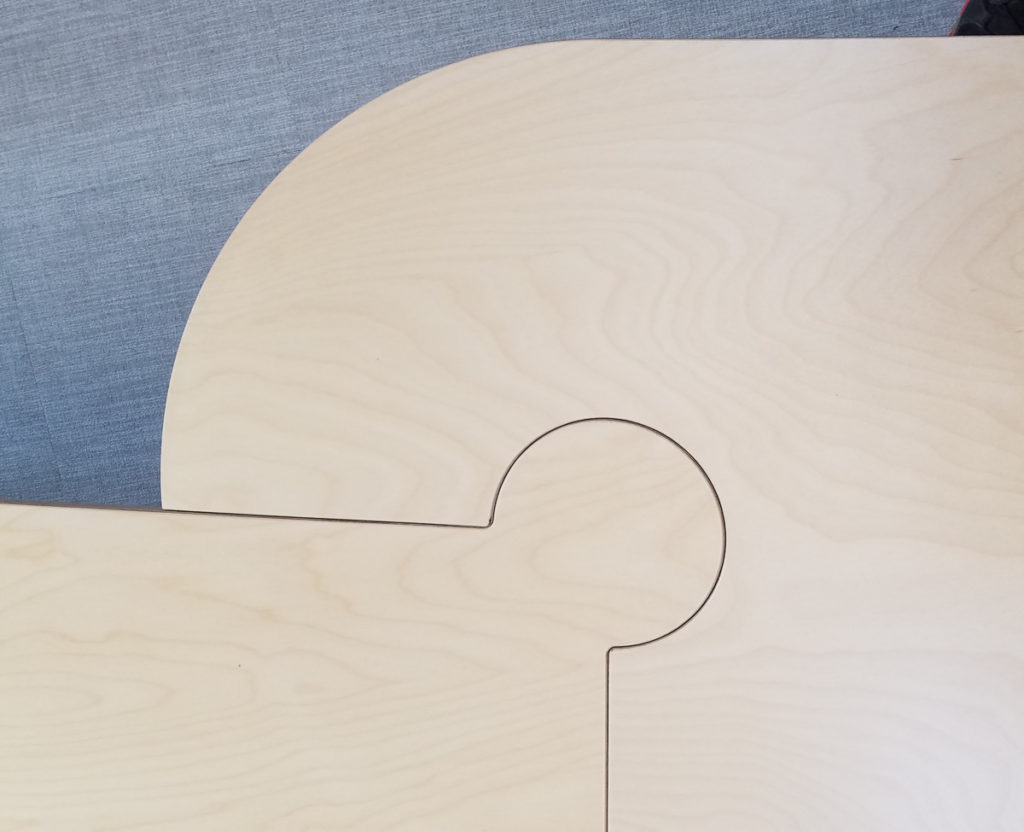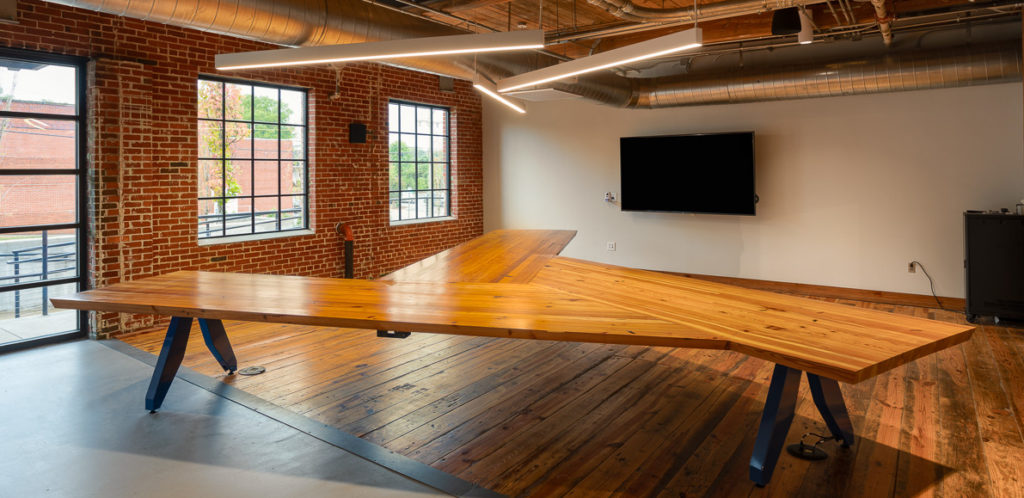
The reopening of Asheville’s Center for Craft features a National Craft Innovation Hub, whose centrepiece is a table by South Carolina designer JD Harrison.
JD Harrison is a designer, with an architectural background, an artist, and furniture maker with a strong commitment to revealing the inner beauty of materials: “why not take off that layer of roughness and reveal the beauty underneath.”
“To know me is to know my love for nature. Bringing that love of nature and environment into my work is paramount.” An 800 mile trek on the Appalachian Trail cemented that intense connection to the natural world. Now Harrison heads up CR8 Design Studios, a multi-faceted design firm that specializes in creative spaces that express a client’s story.
Harrison was commissioned to create the centerpiece for the new Center for Craft, which was re-opening in Asheville, North Carolina.
The centerpiece is an articulated worktable the runs through the length of the center officespace. This is the Center’s narrative:
The individual worktops seamlessly interlock to create a unified and functional whole. The completed furniture forms an undulating spine thru the space serving to anchor and remind us the craft work that was, is and will happen here.

We asked Harrison to tell us the story behind his Center for Craft commission:
✿ What was the commission from the Center for Craft?
The Center approached me to create a piece that would serve as the centerpiece for the coworking space in their newly renovated headquarters. They wanted the piece to speak to The Center’s mission/purpose while picking up historical cues from the building’s past…and of course be pleasing to the eye.
✿ What timber did you use and why did you choose it?
Baltic Birch plywood. (formaldehyde free) Typically I work with solid wood, and mostly storied material expressed in a modern way. The Center for Craft requested the use of Baltic Birch plywood to serve as the common thread for furniture between the varied artists.

✿ What principles guided your design?
How do you make a plywood workstation compelling and sexy w/o feeling forced? How does it feel and sit within the space? How do you incorporate a storyline into the design? What is the user experience with the piece? How do they engage with it? How do make it relevant? Timeless?
Flow. Form. Function. Connections. These are my constant values to explore.
As a designer, as an artist, I seek to find that natural balance between what is considered furniture and art thru storytelling. Each story is unique. If you listen closely, you can uncover those small details to bring to life…and I want the audience to feel that connection. Gaining a feel for The Center for Craft’s purpose and evaluating the history of the building provided the foundational elements for the compelling design for this unique storyboard piece.
Linkij was born under the idea of fluidity of movement and connections. That at least was my interpretation and understanding of what the Center is about at its core. The ability to cultivate and radiate seamless connections throughout the craft community. (the ripple effect).
✿ How do you also tie into the story of the buildings automotive past?
Enterprise Machine Company occupied the building in 1912 producing custom auto parts. I could imagine these repetitive components being machined and stamped out, yet precise in their fitment/alignment with adjacent components.
The top is comprised of 12 individual interlocking pieces. Of the 12 tops, there are six unique shapes, the remaining six are repetitive within the flow of the table. The edges are sculpted to enhance that sense of fluid movement and connection to create a unified whole.
Providing those subtle details and sculpted measures invites people to look with their hands and engage the material. What the eyes don’t immediately pick up, the hands will find. It’s at that moment they truly start to take in the piece
The base serves as that culmination of history and technology. The legs of the base pick up on cues from the buildings original steel truss members while the structure serves as wire chase to connect the technologies. All the while, sitting delicately and peaceably in the space.
Tripod table
A typical piece by him the Tripod Table made in 2018 from solid heart pine. The base sits lightly on the floor and serves to conceal the cabling. It was designed for a tactile experience: “What the eyes don’t immediately pick up, the hands will find. It’s at that moment they truly start to take in the piece.”
Some information in this article was taken from an interview with Heather Grilliot.
Artist
 JD Harrison is a designer.artist born in Anderson, South Carolina. He is director of CR8|DesignStudios.
JD Harrison is a designer.artist born in Anderson, South Carolina. He is director of CR8|DesignStudios.
.


